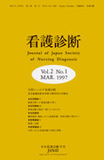- 有料閲覧
- 文献概要
- 参考文献
Individualized care and continuity of care would be difficult without a language and an organizing structure for nurses to communicate their knowledge about the patient as a total person. The clinical decisions and judgments made by the nurse are vital and need to be captured, recorded and communicated. Patient situations are constantly changing and require the independent judgment of the nurse. Without these clinical judgments, there would not be professional nursing. Nursing diagnosis provides a way of thinking about patients, communicating judgments and planning care that fully utilizes the role and expertise of the nurse. Major challenges in the utilization of nursing diagnosis are making it be useful, making it succeed and integrating it into the practice of the individual nurse. The bedside nurse is in the best position to know the total needs of the patient and this knowledge must be communicated in a clear way so that nursing care is provided effectively to meet individual patient needs.
The purpose of this presentation is to describe strategies for implementing nursing diagnosis into the individual nurse's practice. Before addressing these issues it is important to have a standard definition of nursing diagnosis. The definition used by the North American Nursing Diagnosis Association (NANDA) states it is "A clinical judgment about individual, family, or community responses to actual and potential health problems/life processes. Nursing diagnoses provide the basis for selection of nursing interventions to achieve outcomes for which the nurse is accountable" (NANDA, 1994).
Copyright © 1997, Japan Society of Nursing Diagnosis. All rights reserved.


